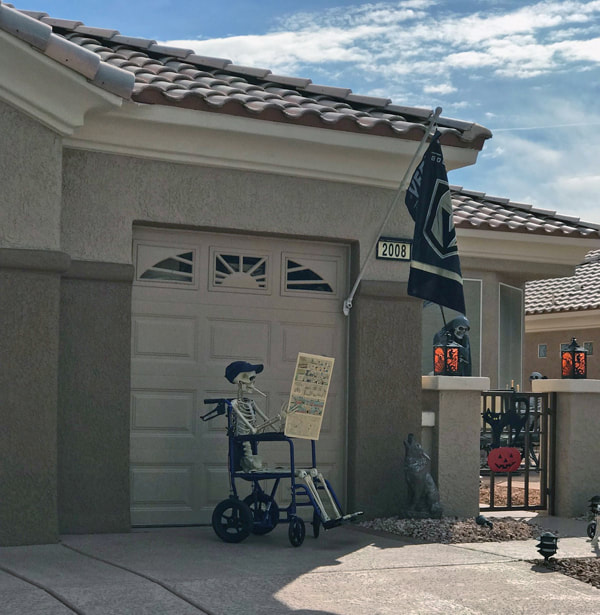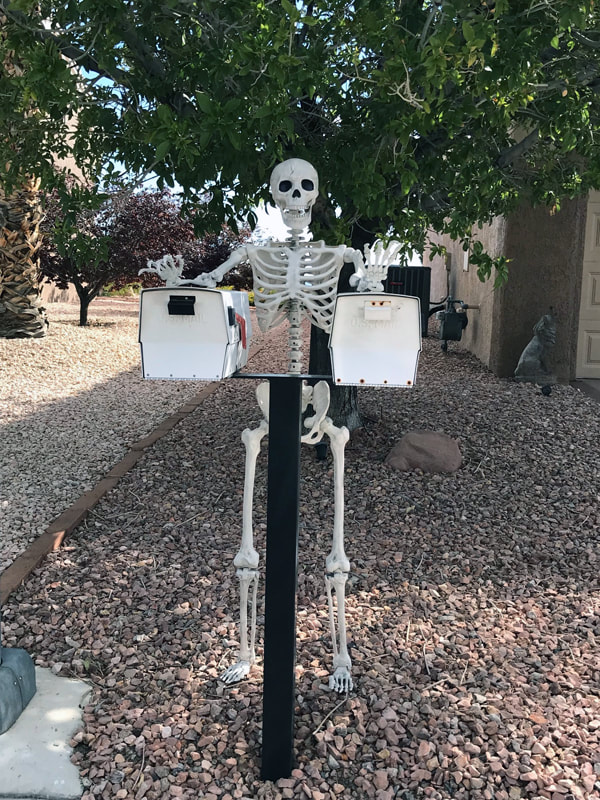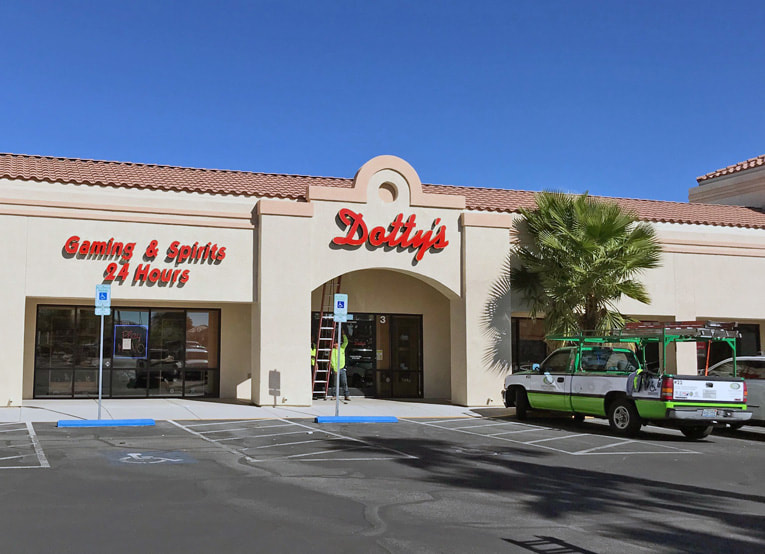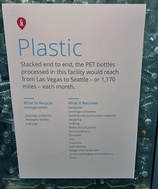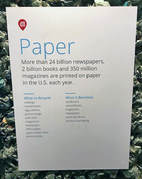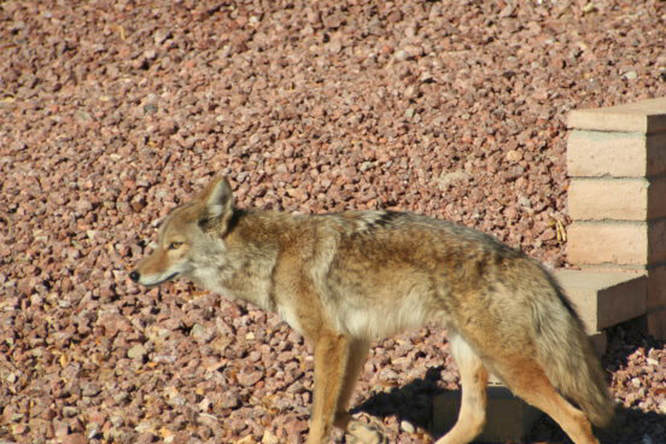Sunset Yoga Is a Hit!
Jeannette Carrillo/Link
Sun City’s Fall Fitness Week, October 22-26, wrapped up four days of new programs with sunset yoga at the Pinnacle Field on Thursday, Oct. 25. The week of classes led by SCSCAI Fitness Director Pam Shields, and fitness specialists Charli Douglass and Jessie Miles, was a result of resident requests for different and exciting classes. Some of the programs included a morning boot camp, strength training, a community walk, an evening cardio dance class, flexibility training and one-on-one fitness consultations.
“Thanks to all of those who took the time to participate in our classes, seminars and workouts during our first-ever Fall Fitness Week last week!” said Pam. “Your level of interest and excitement made it a resounding success. We capped the week’s events off with a wonderful, soothing outdoor yoga class at the Pinnacle softball field.”
If you attended any of the Fall Fitness Week classes and liked what you experienced, be sure to let Pam, Charli or Jessie know.
The Fitness Department Office is located at the Desert Vista Community Center.
“Thanks to all of those who took the time to participate in our classes, seminars and workouts during our first-ever Fall Fitness Week last week!” said Pam. “Your level of interest and excitement made it a resounding success. We capped the week’s events off with a wonderful, soothing outdoor yoga class at the Pinnacle softball field.”
If you attended any of the Fall Fitness Week classes and liked what you experienced, be sure to let Pam, Charli or Jessie know.
The Fitness Department Office is located at the Desert Vista Community Center.
Tour of Republic Services Recycling Plant Yields Valuable Information
Marise Mizel, president of Sun City’s Travel Club (Local) had the brilliant idea of getting a bus trip together to take interested residents to the Republic Services Learning Center. The trip was designed as an education in recycling and to simply explain the proper ways to recycle.
The trip was well organized and very informative. When we arrived at the center, our guide, Jeremy Walters, community relations manager, led our group around the facility, demonstrating how various things are recycled and what is not recyclable.
To my surprise, some of the things I believed I was doing perfectly with regard to recycling was not perfect.
For me, one of the biggest things that jumped out as to what I’ve been doing wrong was shredded paper. I thought for sure paper was an item that could be placed in the recyclable bin. It is not. According to information provided on the tour, paper is too small to be of use and so it should go into the trash bin.
Another surprise was the use of any type of shrink plastic wrap and plastic bags – both of which gum up the recycling machines and create problems. Those two items also belong in the trash. An example of shrink wrap would be the plastic that a case of water bottles is wrapped in. This also includes bubble wrap.
A good question was asked during our tour: What about a pizza box that’s made of cardboard? Well, the bottom part, which would be the messy part, should go in the trash, but if the top of the box is clean and dry, then that could be ripped off and put in the recycle bin.
In addition, and eye opener for me was something like a cardboard carton that holds, for example, broth. The inside of it is plastic; the outside may be coated with plastic, as well. This is not recyclable and belongs in the trash.
So, what goes into the recycle bin then? Clean and dry is key!
The categories that are acceptable would be clean, dry cardboard, paperboard such as cereal boxes and towel rows, magazines and catalogs, junk mail, office paper, phone books, aluminum cans, plastic bottles (but NOT Styrofoam), brown paper bags, newspapers, and glass bottles and jars. If something outside of glass containers is dirty or wet, in essence contaminated, it needs to go into the trash.
Note: Regarding glass containers, jars, etc., Jeremy emphasized that he certainly didn’t expect people to wash and dry out bottles of ketchup or peanut butter. But, if one could just rinse out the jar so it’s relatively clean of debris and then put the lid back on top of the container, that would greatly help.
Jeremy also noted that there are some myths that need dispelling: One is that Republic Services is making a ton of money on recyclables. In truth, there is little profit for Republic to make. In fact, Republic pays to have the glass items recycled.
Another myth is that Republic receives money from the state or government to assist in recycling. This, he said, is absolutely not true. Not one tax dollar goes to Republic to help in this endeavor.
The trip was educational and fascinating, and certainly worth my time. I would recommend Jeremy’s presentation to anyone even remotely interested in how recyclables work.
After talking with Jeremy, I asked our Executive Director, Mitzi Mills, if Jeremy could present a town hall meeting just to speak to people about the recycling aspect of our trash collection.
My understanding is that Mitzi will be looking into this and you may hear about an upcoming meeting in the future. Again, it surely opened my eyes to things I thought I already knew. I think you might find it equally interesting, as well.
In the meantime, if you have a question about recycling, Jeremy recommended the website https://recyclingsimplified.com.
The trip was well organized and very informative. When we arrived at the center, our guide, Jeremy Walters, community relations manager, led our group around the facility, demonstrating how various things are recycled and what is not recyclable.
To my surprise, some of the things I believed I was doing perfectly with regard to recycling was not perfect.
For me, one of the biggest things that jumped out as to what I’ve been doing wrong was shredded paper. I thought for sure paper was an item that could be placed in the recyclable bin. It is not. According to information provided on the tour, paper is too small to be of use and so it should go into the trash bin.
Another surprise was the use of any type of shrink plastic wrap and plastic bags – both of which gum up the recycling machines and create problems. Those two items also belong in the trash. An example of shrink wrap would be the plastic that a case of water bottles is wrapped in. This also includes bubble wrap.
A good question was asked during our tour: What about a pizza box that’s made of cardboard? Well, the bottom part, which would be the messy part, should go in the trash, but if the top of the box is clean and dry, then that could be ripped off and put in the recycle bin.
In addition, and eye opener for me was something like a cardboard carton that holds, for example, broth. The inside of it is plastic; the outside may be coated with plastic, as well. This is not recyclable and belongs in the trash.
So, what goes into the recycle bin then? Clean and dry is key!
The categories that are acceptable would be clean, dry cardboard, paperboard such as cereal boxes and towel rows, magazines and catalogs, junk mail, office paper, phone books, aluminum cans, plastic bottles (but NOT Styrofoam), brown paper bags, newspapers, and glass bottles and jars. If something outside of glass containers is dirty or wet, in essence contaminated, it needs to go into the trash.
Note: Regarding glass containers, jars, etc., Jeremy emphasized that he certainly didn’t expect people to wash and dry out bottles of ketchup or peanut butter. But, if one could just rinse out the jar so it’s relatively clean of debris and then put the lid back on top of the container, that would greatly help.
Jeremy also noted that there are some myths that need dispelling: One is that Republic Services is making a ton of money on recyclables. In truth, there is little profit for Republic to make. In fact, Republic pays to have the glass items recycled.
Another myth is that Republic receives money from the state or government to assist in recycling. This, he said, is absolutely not true. Not one tax dollar goes to Republic to help in this endeavor.
The trip was educational and fascinating, and certainly worth my time. I would recommend Jeremy’s presentation to anyone even remotely interested in how recyclables work.
After talking with Jeremy, I asked our Executive Director, Mitzi Mills, if Jeremy could present a town hall meeting just to speak to people about the recycling aspect of our trash collection.
My understanding is that Mitzi will be looking into this and you may hear about an upcoming meeting in the future. Again, it surely opened my eyes to things I thought I already knew. I think you might find it equally interesting, as well.
In the meantime, if you have a question about recycling, Jeremy recommended the website https://recyclingsimplified.com.
Ken Caroccia, Vice President, SCSCAI Board of Directors
The Dance of the Sugar Plum Fairy Is Getting a Latin Twist
The production of the “Nutcracker Ballet” is anything but ordinary and Jordance Studios is showing how this classic can be reimagined.
A weekend of snowflakes, a sugar plum fairy, toy soldiers and Salsa? Prepare to be amazed as the classic Nutcracker Ballet is dazzled with a Latin Twist. The reimagined twist on the classic ballet production will come to life Thanksgiving weekend in the Palo Verde High School theater, 333 S. Pavilion Center Drive, on Saturday, November 24, at noon and 6 p.m., and on Sunday, November 25, at 2 p.m.
Tickets are $25, with special senior pricing at $18 for those 60 years old and over.
A weekend of snowflakes, a sugar plum fairy, toy soldiers and Salsa? Prepare to be amazed as the classic Nutcracker Ballet is dazzled with a Latin Twist. The reimagined twist on the classic ballet production will come to life Thanksgiving weekend in the Palo Verde High School theater, 333 S. Pavilion Center Drive, on Saturday, November 24, at noon and 6 p.m., and on Sunday, November 25, at 2 p.m.
Tickets are $25, with special senior pricing at $18 for those 60 years old and over.
Coyote Season Returns
Residents throughout Sun City are reporting seeing coyotes in the community. As such, SCSCAI reminds those walking their dogs during the early morning and dusk hours to practice safe behaviors – this includes keeping your dog on a leash at all times, carrying some sort of noise-making device that can be as simple as a few coins placed inside an aluminum can to scare away a coyote and never leaving your pet/s unattended in your front courtyard or backyard. According to The Nevada Department of Wildlife, coyotes don’t want anything to do with people, but they are attracted to small pets. Some simple rules for coexisting with coyotes include: Feed your pet/s indoors, don’t feed wildlife and always place a lid on your outdoor garbage cans. If you see a coyote near your yard, be sure to make lots of loud noise to scare the animal away. If you make it uncomfortable for the coyote it will move on.


